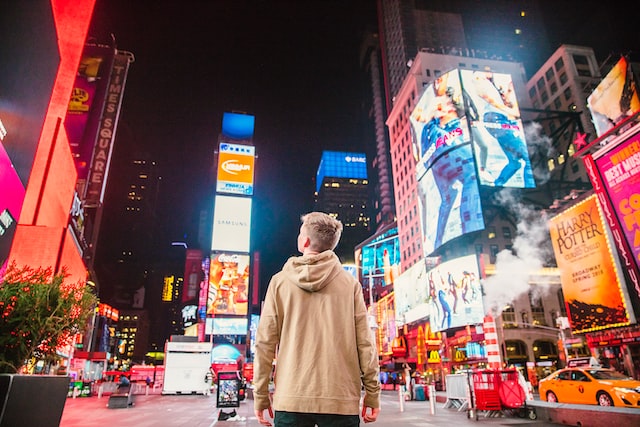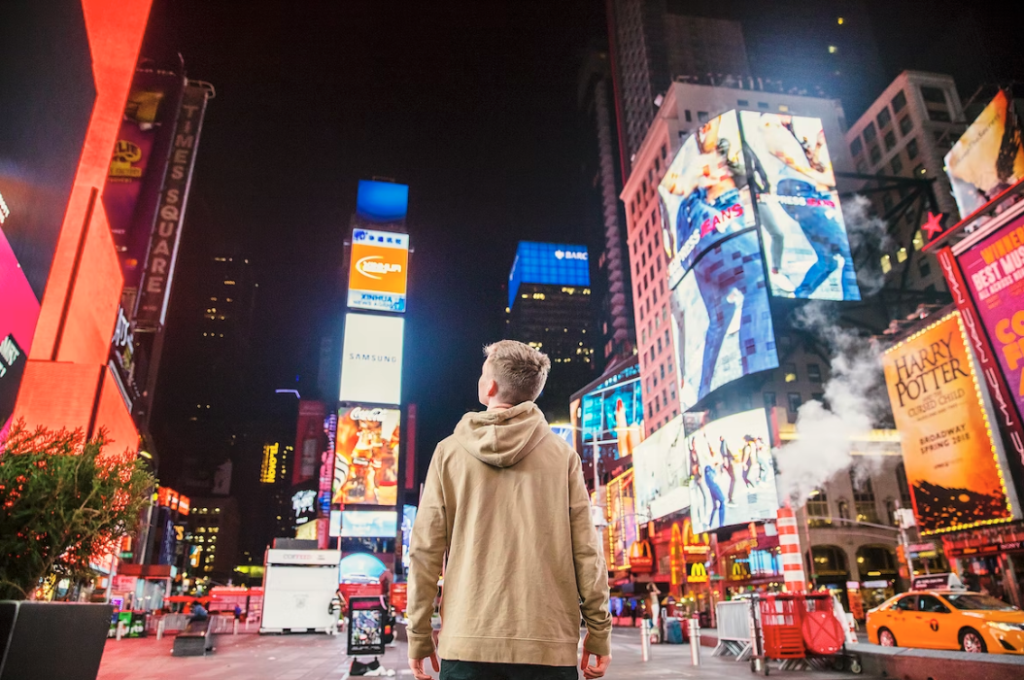Out-of-Home’s Continued Success in Today’s Data-Driven Landscape

Marketers continue to look for opportunities to add variety to their media mix. One solution? Out-of-home (OOH) media. This unique media tactic includes all advertising that is located outside the home. There are several different OOH ad formats, but they are commonly broken out between static and digital. Static format examples include bulletins, posters, wallscapes, transit shelters, and bus wraps, whereas digital formats include bulletins, posters, and kiosks. The name of each category clues marketers into the creative needed but also the experience the user has with the ad type.
From billboards to public transportation advertisements, the options for OOH media are vast. But understanding when OOH should be added to a campaign and what tactics to leverage are the keys to unlocking success. Let’s break it down.
Available OOH ad formats
Static and digital OOH media tactics offer different benefits to marketers. Here are the primary advantages of each type:
| Static OOH | Digital OOH | |
| BENEFITS | ● Creative is always on, or in other words, the marketer would have 100% share of voice as it is not in a rotation with others
● Static panels have the ability to be enhanced with extensions or build outs allowing the creative to stand out more to on-the-go consumers. An extension and/or build outs are part of the copy of the creative that extend beyond the dimensions of the panel. It is important to note that extension costs generally go by square feet and limitations to extensions can vary depending on the vendor and city ordinances |
● Assets utilized are dynamic in nature, meaning content can be leveraged across bulletins, posters, and kiosks
● Ability to run multiple creative assets within a rotation (typically within an 8-spot rotation), usually more cost effective, and creative files are able to be live in a much faster capacity as they are uploaded to their individual servers to get scheduled
|
| DRAWBACKS | ● Creative assets needing to be produced further in advance compared to digital due to production timelines. Due to physical material needing to be produced, additional cost should be considered when evaluating campaign budgets
● Do not offer the ability to swap creative versions quickly (unlike digital) as installation timelines affect how quickly material will be live in the market and the sheer cost to do so |
● Often not able to achieve 100% share of voice within an 8–15-second rotation with six-to-eight other advertisers
● No opportunities for extensions or build outs like static units |
OOH encompasses some “non-traditional” tactics that can be leveraged to enhance a campaign. Some of those include aerial banners, bar coasters, magnets, sand stamps, projections, and street teams. Some of these can be seen as more “guerilla” style as they sometimes are done on a spontaneous basis like a street team takeover. While these non-traditional OOH ad types may not get as much mass reach, impressions, or traffic, they are unique ways to deliver your message in spaces where other media cannot.
The benefits of out-of-home media
No matter if you use static, digital, or “non-traditional” OOH tactics, there are many benefits marketers can reap from OOH. A few include:
- High consumption: According to OAAA (Out of Home Advertising Association of America), except for television, consumers 18–64-years old spend more time with OOH than any other media type. Additionally, even though consumers spend 70% of their day away from home, on average, only 5% of ad budgets are allocated to OOH
- Strong ROI: ROI is extremely good compared to other traditional media when brands have engagement-focused goals. A recent example of how OOH advertising has a high engagement with consumers is through a recent study that revealed that consumers not only saw the ads, but the ads drove them to engage with the product (OAAA & Harris)
- Driving awareness: Generating awareness is OOH’s biggest benefit for marketers, especially for those brands hoping to drive awareness of brick-and-mortar locations. By placing ads in locations nearby, local consumers are able to be targeted. However, the benefits of OOH ads span further than just the local benefits. OOH also can have a national impact
But the success of OOH media hinges on both a strong message and creative. Ensuring your brand’s message is aligned with the creative will allow viewers to easily grasp what your brand is trying to convey. Marketers and their creative partners must ensure they are fully capturing the attention of individuals and that the OOH assets will lead to action or recall. Successful OOH creatives are those that enable the consumer to read it quickly, so keep messaging to-the-point, brief, and on-brand.
What marketers need to know:
OOH is ever changing and evolving to bring awareness on a broad scale. By recognizing the benefits of OOH media within the media mix — such as its ability to reach both broad and more nuanced audiences through various tactics and locations — marketers and those planning campaigns will be able to utilize OOH media both efficiently and effectively.



